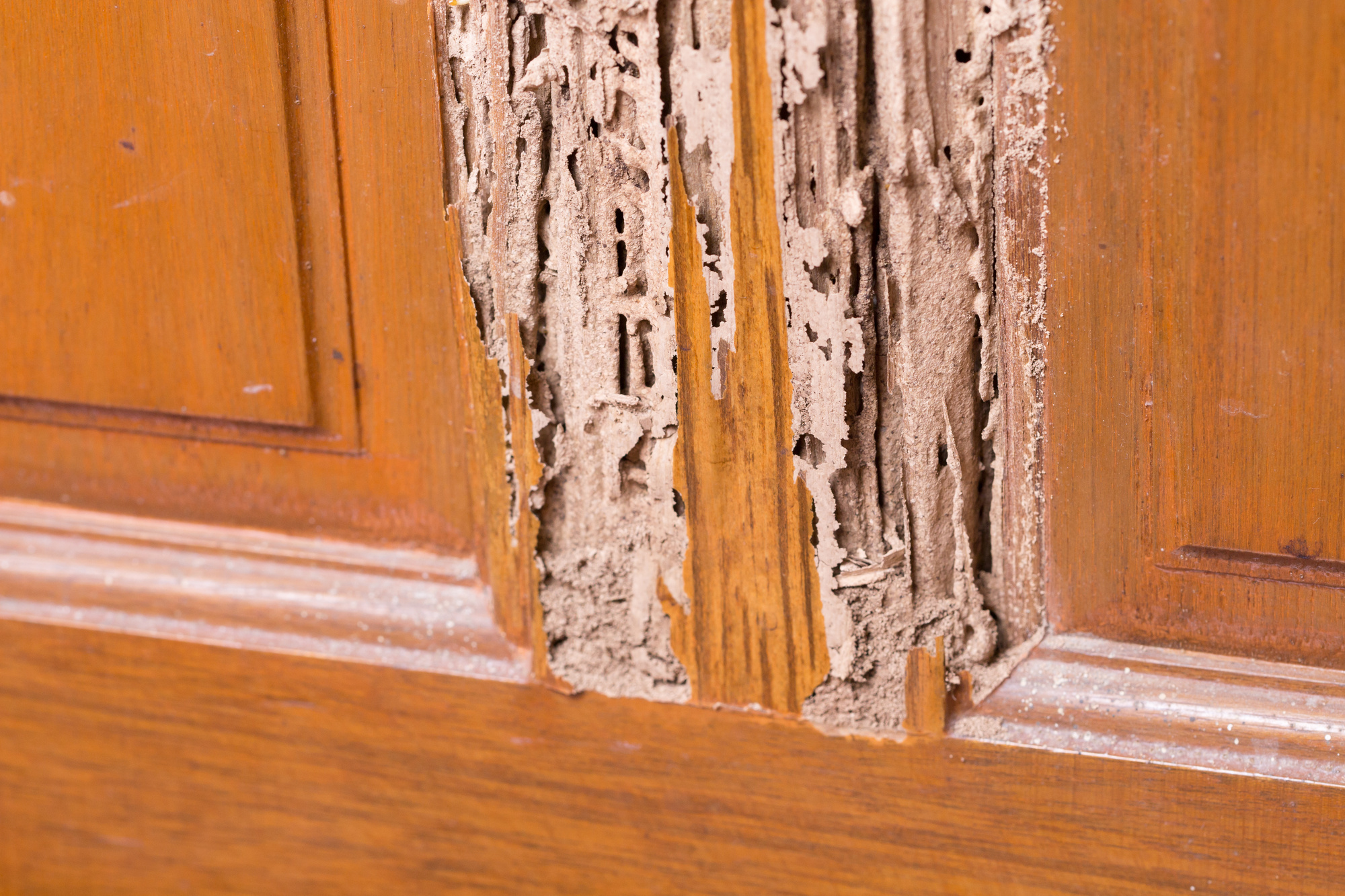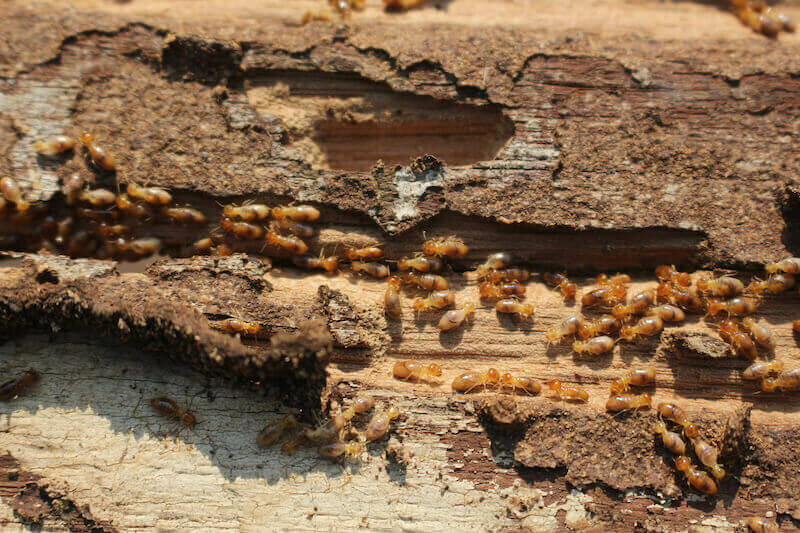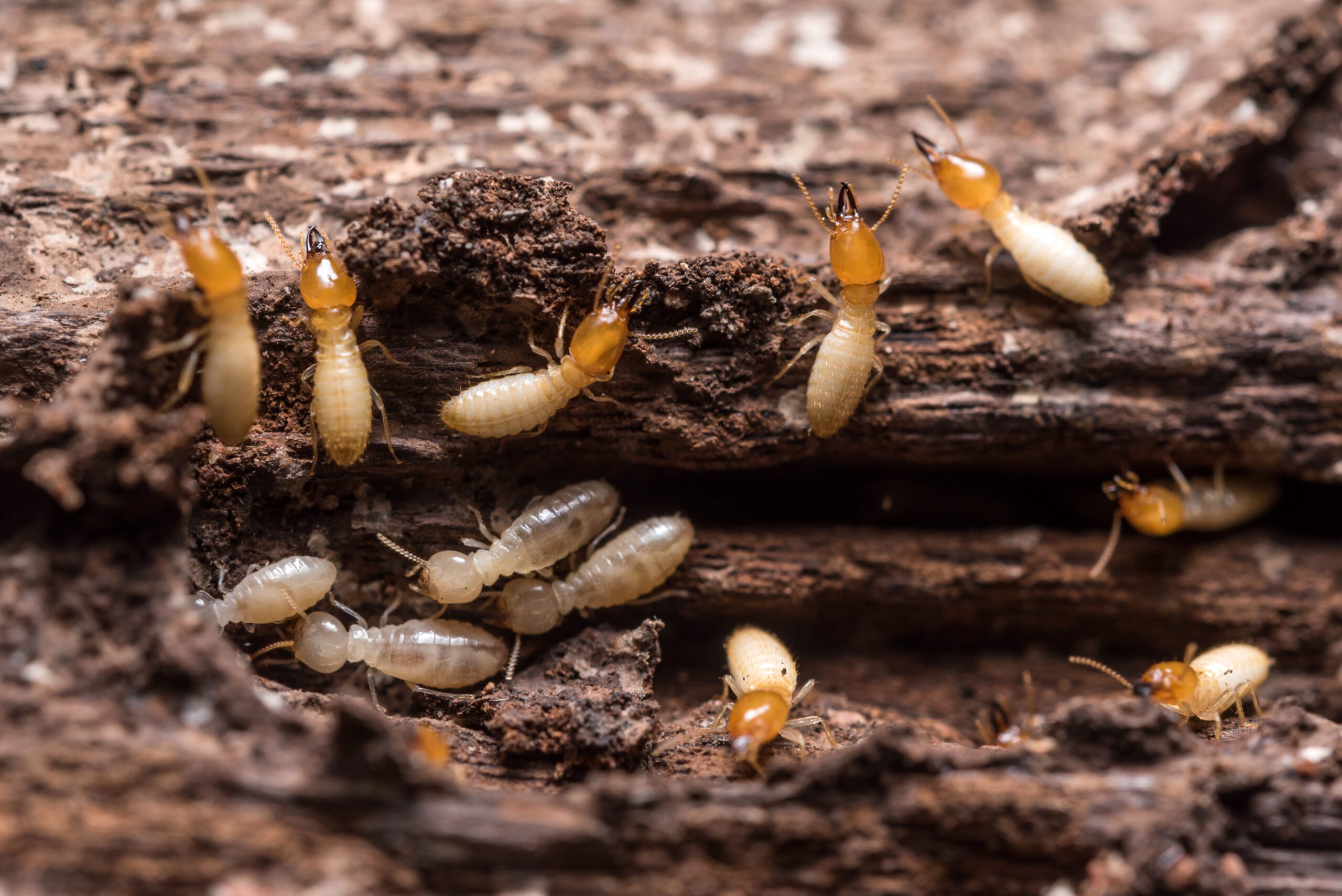Termite Removal in Ohio
Pest Control Xperts Services for Wooster, Including Apple Creek, Orrville, Fredericksburg, Dalton, Smithville, Marshallville, and Shreve
Termites are a major concern for property owners in Ohio, including those in Wooster and nearby communities such as Apple Creek, Orrville, Fredericksburg, Dalton, Smithville, Marshallville, and Shreve. These insects often invade structures through soil contact or hidden entry points, quietly feeding on wooden beams and other cellulose based materials. By the time someone notices paint bubbling, drywall damage, or mud tubes on a basement wall, the underlying colony may have caused substantial weakening in floors or frames. Many people try short term sprays or spot treatments, hoping to remove visible signs of termites, only to find new damage weeks later when the main nest continues reproducing underground or behind interior walls. In contrast, a professional plan from Pest Control Xperts focuses on the entire colony, from the queen to worker termites, ensuring true resolution rather than surface level fixes.
Some owners place insecticide along the perimeter of a basement or remove a small patch of rotting wood, believing that might deter further activity. Yet subterranean termites, which are common in much of Ohio, maintain complex tunnels in soil, traveling into structures for moisture and wood. Killing a few foragers near a basement does not halt the queen or worker population thriving in hidden galleries. By deploying specialized termiticides, in ground bait stations, or foam injections targeting known tunnels, an exterminator in Wooster can end the feeding cycle at its source. Below, discover why termites thrive in Wooster and these surrounding towns, the damage they can inflict if left untreated, the early warning signs that suggest an infestation, and how Pest Control Xperts uses proven steps for termite removal in Ohio that save owners from repeated illusions undone by hidden nests.
Why Termites Emerge in Wooster, Apple Creek, Orrville, Fredericksburg, Dalton, Smithville, Marshallville, and Shreve
Although termites can appear in many places across the state, certain factors in these locations provide ideal conditions if not addressed promptly:
- Moisture and Damp Wood
Termites rely on damp or decaying wood, so small leaks, basement humidity, or rotting porch posts can stay humid enough for their feeding. Some people patch large plumbing issues but ignore minor drips or condensation, letting termites settle unnoticed. Once they locate a source of moisture, the colony can expand into additional wooden supports. - Soil to Wood Bridges
Subterranean termites create mud tubes from soil into structural wood. When deck supports, wooden siding, or fence posts contact soil directly, the insects gain easy entry. Firewood stacked against a house or mulch piled high near a foundation can also draw worker termites to siding or frames. Without a barrier, termites slip inside, feeding quietly. - Mulch and Yard Debris
Mulch next to wooden walls often retains moisture against exterior beams. People sometimes add mulch for landscaping without realizing it encourages termites to come closer. Similarly, old stumps or neglected yard debris may harbor nests that spread to a nearby home or business if wood meets damp conditions. - Delayed Recognition
Termites eat wood from inside, leaving surface layers intact. Owners might only notice bulging paint or small pinholes once damage is advanced. Spot treating one rotted patch or brushing away a few mud tubes rarely addresses the larger nest beneath the soil or within internal framing. - Partial Do It Yourself Attempts
Spraying an insecticide near a basement wall or removing visible mud tubes can kill some termites in those areas, but the queen and main tunnels remain unscathed. Worker termites quickly repair tubes or create new pathways, renewing activity a few days or weeks later. A thorough approach from an exterminator in Wooster is needed to reach the root colony.
Recognizing these elements prompts owners to focus on dryness solutions, rethinking how wood touches soil, and seeking a professional exterminator that removes termites from both the structure and soil environment.

Problems Termites Bring to Properties
While termites do not commonly harm people directly, their feeding significantly impacts structures and finances:
- Structural Weakening
Termites break down support beams and other load bearing elements. Over time, floors can bend, walls might shift, and porch supports fail if not repaired. The hollowing out of wood leads to potential safety issues and expensive reconstruction bills if left unaddressed. - High Repair Costs
Insurance policies often exclude termite damage, leaving owners to pay for replacing rotted beams or subfloors. When a colony is large and spread throughout multiple areas of a building, restoration can prove extensive and costly. Early detection saves money, but many people only confirm a problem when damage is severe. - Reduced Property Value
During property transactions, lenders and buyers typically require termite inspections. If active colonies or past significant damage is discovered, buyers can hesitate or request large concessions in price. Even after removal, a history of termites may cause ongoing concerns among potential purchasers. - Potential Spread to Neighbors
In communities where properties sit close together or share fence lines, a termite colony can sometimes expand into adjacent yards if conditions suit them. One individual might fix the issue on their land, only to see termites return from a neighboring property that did not treat its own infestation. - Day to Day Anxiety
Noticing silent insects chewing on wooden supports undermines peace of mind for owners or staff. Each new paint bubble or slight sag in a floor can trigger worries about undiscovered termite damage. A thorough exterminator plan delivers true reassurance by removing every hidden pocket of termites.
Early Indicators of a Termite Infestation
Termites stay hidden, so owners watch for certain indirect clues pointing to a deeper nest:
- Mud Tubes Along Foundations or Basements
Subterranean termites construct pencil sized tubes of soil to protect their route from ground to wood. Brushing them off might remove the visible path, but if the colony remains, new tubes reappear. Observing these tubes is a strong warning sign. - Swarmers or Discarded Wings
When a colony matures, it sends out winged termites (swarmers) to start new nests. Finding these winged insects near windows or small piles of discarded wings strongly suggests a large population producing new reproductives. Some people confuse swarmers with flying ants. - Peeling Paint or Bubbling Surfaces
Termites hollow out wood from within, causing paint to bubble or drywall to warp slightly. Tapping these areas might produce a hollow sound, indicating eaten wood beneath. Patchy fixes do not remove the feeding galleries or the queen. - Sawdust like Frass
Termites sometimes push out small particles of chewed wood or droppings near baseboards or window frames. Though not as obvious as some pests, discovering unexplained piles of dust may point to termite tunnels behind the surface. - Softening Floors or Porch Supports
When termites have consumed too much internal wood, floors can develop spongy spots or porch posts wobble under pressure. Waiting to see if it worsens is risky, as the colony may grow quickly. A professional check clarifies the scope of damage.

Why a Wooster Exterminator Is Crucial for Termite Removal in Ohio
While some people attempt partial or do it yourself termite treatments, advanced exterminator coverage reaches the root of the colony:
- Complete Inspection
A specialist checks foundations, crawl spaces, yard perimeters, and wooden supports for mud tubes, hidden moisture, or rotting beams. Identifying every potential tunnel or nest entry helps shape the plan, whether in ground bait stations or trenching is required. - Correct Product Application
Subterranean termites often call for a trench and rod injection of liquid termiticide or installation of bait stations. Alternately, foam injections might be used for targeted galleries. Simple off the shelf sprays do not reach the queen or the main tunnels safely. A trained exterminator in Wooster ensures thorough coverage. - Safe, Targeted Methods
Families usually remain onsite, only avoiding newly treated soil or partial basement sections for a short time. By confining termiticides to perimeter trenches or known termite galleries, chemical exposure is minimized while ensuring foraging workers contact lethal solutions. - Wood and Moisture Corrections
Eliminating termites helps, but owners must also address rotted wood, dryness solutions, or direct wood to soil contact. Without these steps, new colonies can reenter. An exterminator points out the spots that invite future termite infestations, from damp porch posts to insufficient grading near foundations. - Follow Up and Monitoring
Eggs or satellite tunnels might remain even after initial treatments. A second visit confirms no new mud tubes or swarming appears. The plan only concludes once no signs of termites appear for a set timeframe, ensuring illusions are not undone by leftover pockets.
Pest Control Xperts Termite Removal Approach
Our program addresses each aspect of an infestation, from early detection to ensuring no survivors remain:
- Consultation and Inspection
An exterminator in Wooster reviews suspicious paint bubbles, mud tubes, or wood damage with owners, then inspects basements, crawl spaces, porches, or yard edges for more thorough signs. Identifying how termites enter shapes whether trenching, bait stations, or foam is best. - Product and Technique Selection
Subterranean termites often require trench applied liquid termiticide or in ground baits that foraging workers carry back to the nest. In certain cases, injecting foam into wall voids or rotted beams can tackle a known gallery. The goal is to reach the queen and entire colony rather than surface foragers alone. - Careful Application
Termiticides or baits are placed around foundations or inside targeted soil lines. Families remain in the building, simply avoiding new treatments until dryness or safety clearance. This guided process ensures minimal disruption while maximizing termite contact with lethal materials. - Structural and Moisture Adjustments
We advise owners to fix minor leaks, replace rotting sections, or keep wood from resting on soil. If a deck post stands directly in the ground, raising it or adding a barrier may be recommended. Implementing these steps blocks future colonies once the current one is removed. - Monitoring for Recurrence
If new signs arise, a return visit checks for unaddressed tunnels or newly created pathways. Completion only comes after owners confirm no renewed termite activity for a set period, delivering lasting confidence that illusions of success are not undone by hidden survivors.

Why People in Wooster, Apple Creek, Orrville, Fredericksburg, Dalton, Smithville, Marshallville, and Shreve Choose Pest Control Xperts
Local owners pick our termite removal in Ohio for several key reasons:
- Local Knowledge
An exterminator in Wooster understands the building designs, soil conditions, and termite infiltration patterns typical in Wayne County and the surrounding region, speeding up detection of hidden entry points. - Full Colony Destruction
We do more than remove a handful of worker termites. By killing the queen and the broader network, no new foragers replace those lost, preventing illusions undone by leftover pockets continuing to feed on wood. - Safe, Focused Treatments
We localize chemical usage to trenches, baits, or identified galleries, sparing families from broad chemical coverage. People remain on site, simply avoiding treated areas until dryness. This approach targets termites accurately. - Structural and Moisture Solutions
Eliminating a termite nest solves the immediate crisis, but rotting beams or direct soil contact invites fresh colonies. We point out dryness tasks or minor repairs that protect wood from the conditions termites exploit. - Follow Through if Needed
If fresh mud tubes or swarmers reappear after initial coverage, a second inspection locates overlooked nest pockets. The job concludes only when zero termite evidence surfaces for a designated window. - Professional Service
We arrive according to schedule, speak plainly about each step, and treat property responsibly. Many local homeowners note how our thorough coverage and local insights resolve termite problems fully, saving them from repeated partial solutions.
Contact Pest Control Xperts for Same Day Service
If new paint bubbles along a porch in Wooster or families in Apple Creek, Orrville, Fredericksburg, Dalton, Smithville, Marshallville, or Shreve spot mud tubes in the basement, a small do it yourself treatment rarely defeats the hidden termite colony. Pest Control Xperts delivers termite removal in Ohio by trenching along foundations, placing advanced in ground baits, or injecting foam in known galleries, all while instructing owners on dryness fixes so new colonies do not return. An exterminator in Wooster finishes coverage only after confirming no leftover nests remain, ensuring illusions of success are not undone by unseen soil tunnels continuing to feed on wood.
Call Pest Control Xperts right away for same day service and preserve your property from ongoing termite feeding. By merging targeted chemical applications or baits with minor structural or moisture corrections, owners stop the entire colony, from the queen in the soil to foragers in rotted beams. That synergy ends the prospect of rotting beams, warping floors, or major repair bills, letting families or staff relax knowing no silent insects remain chewing from within. With a professional approach, each stage of the termite problem is handled thoroughly, preventing illusions undone by hidden passages or leftover pockets that would otherwise allow a colony to rebuild.
